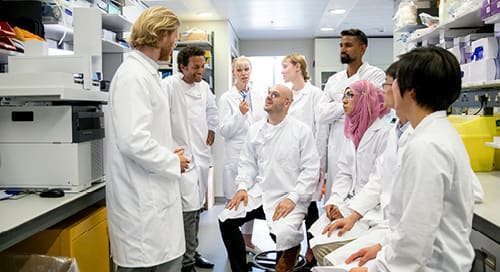
Why would anyone want to be a career builder when they risk losing the people they develop?
It’s a provocative question many leaders answer by not developing their people. But this strategy doesn’t work—because people who aren’t nurtured by their leaders end up leaving anyway.
Career development is about the employee experience. It’s about the leader learning what’s important to the individual on a very personal level and discovering their strengths. It’s about understanding that people are happiest when they are growing and when they are respected for their skills and strengths.
When leaders recognize what’s personally important to the individual, the individual’s performance improves. Every employee wants to use their strengths through the course of the day. It feeds and energizes them. It helps them feel good about who they are and what they contribute.
The best leaders know putting in the time and effort to cultivate their people is always a smart investment. While they may end up losing someone in the end, they know they are gaining the loyalty of the person they are helping. And, in the process, they’ll earn the respect of all of their people.
Have Ongoing Conversations
Smart leaders partner with their people and have ongoing conversations about career development. This includes asking “Where do you want to be and how can I support you in that way?”
This shouldn’t be just a single conversation. It should be a living, breathing dialogue. Leaders should constantly be checking in with their people. When possible, they should partner with HR to create a potential pathway and provide necessary resources such as classes or certification.
Career development doesn’t have to mean leaving for another job. A leader seeking growth can become a mentee of an executive in another department or they can mentor someone who’s more junior.
The right course of action is to give an individual the space and resources to grow and learn more about themselves. The goal is to place a priority on the person, not just have them accomplish tasks. And if there isn’t room for the person to thrive, help them find the next step in their professional development.
Dealing with Doubts
Many leaders find career development conversations intimidating because it’s outside of their day-to-day duties. There’s also fear of the unknown. Leaders wonder if they are opening a Pandora’s Box. An employee could go through a career development journey and decide their current job isn’t for them.
The best way to handle this is to have ongoing conversations monthly, or at least quarterly. Your job as a leader is to make sure there is time on the meeting agenda where you can ask questions such as:
- How are you doing?
- Where are you in your career journey?
- How can I help you?
Making this conversation a standing agenda item normalizes it, which can help eliminate discomfort. Anxiety dissipates because the topic becomes a familiar one. The individual becomes excited and feels like their leader truly respects and trusts them. They come to a place of understanding and clarity. All a leader needs to do is operationalize whatever decision the person reaches—be it staying or leaving for another opportunity.
Happy Employees Are Productive Employees
One effective technique is to list all of an employee’s strengths and create a plan that aligns with their goals. This is powerful because it produces both short-term and long-term results. People get to use their strengths on a regular basis, which translates into happy and productive employees. As for the long term, people who do what they love can make a tremendous difference when leaders assign them to mission-critical tasks. This is one way a company can achieve its strategic goals.
When there’s a mismatch between a person’s strengths and their job duties, they experience little joy at work and the company doesn’t get their best effort. Productivity issues can arise. It’s a lose-lose situation. Making sure a person’s strengths and tasks are aligned can eliminate this problem.
Create Milestones
Effective leaders create milestones that help people reach their career development goals. When you track their progress, individuals feel like they are part of a formalized process.
Creating milestones is an important way to operationalize career development. The individual has a yardstick to measure their growth. The leader shows they want to create a real partnership.
The Gift of Career Development
When you look back at your life, you undoubtably have fond memories of the people who believed in you, encouraged you to cultivate your talents, and put your interests before theirs. They made a lasting impression on you and helped you become the person you are.
Career development is your opportunity to be a mentor who changes someone’s life for the better. What more could a leader want?
About the Author
More Content by Kristin Brookins Costello







